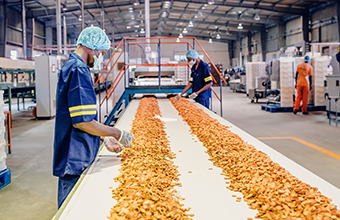When relocating office space there is always an internal discussion that takes place regarding the balance between cost and culture.
Most companies believe that having a good culture includes having a cool office space. It can be a major factor in a company’s ability to recruit and can enhance collaboration as well as productivity. However, there is no avoiding the bottom line. Moving to a new space (or even renovating the old) is a process that usually comes with sticker shock. At the end of the day, companies have to be profitable and must make a smart decision on how to balance cost with culture.
So how do companies make these decisions? I recently led a panel for the Colorado Real Estate Journal, where we discussed just that. I spoke with Melissa Clayton Senior VP of Portfolio Management of Mercy Housing and David Roberts, CEO of SurveyGizmo who discussed a recent move with his previous company, Reed Group.
Here is what they had to say, regarding their recent office relocations.
What were the driving factors in your decision to move?
David Roberts – The previous panel spoke to the decisions CEO’s make to improve their workplace and their culture. Ultimately, we are sort of forced into it. Our lease is up, we were growing, and we needed to find new space. Reed Group had 200 people in 2011. We got to the point where we were growing towards 600 and just need more space. So that was the primary factor that drove us into it. Ultimately, we took advantage of the process making some changes to our space and culture along with the move.
Rick Door – Melissa’s organization had been in the same building for 15 years. When we started the project, we were staying. Tell us what happened.
Melissa Clayton – After 15 years you can imagine how shabby-chic our space was. We started negotiating with our building and played the field with 15 other buildings in the central business district. They led us to believe they really wanted to work with us. Rick did such a great job at negotiating, that we ended up getting a deal where we saved 1.6 Million over the term of the lease.
Also, if we had stayed, we would have had to move twice, to a swing space and back, once the renovations were complete. We have two floors and over 36,000 SF, so that was not appealing to us.
Neither of you moved very far. How did location factor into the decision and why did you stay in your current sub-market?
Melissa – For us, it was important to stay close to the light rail and bus lines. Even just three blocks away we were sort of in a food desert, but now we are more centrally located to the 16th Street Mall. It was also important to our CEO, who has been with the organization for 35 years, that we stayed close to where we were so that the employees would feel comfortable.
David – For me finding upwards of 70,000 SF in Westminster was difficult. We toured 6-7 different locations, but the one right next door had the best options and the best space. And I thought it would be easy to move next door.
How did you manage the cost versus culture?
Melissa – We have 200 employees and we went from a building with four conference rooms and one lounge area if you could call it that. We now have 23 focus/ huddle rooms, lounges and couch areas. We built a nice community hub with banquet seating and views of the city, so it is really getting utilized.
For us, it was about fewer private offices and more private areas for folks to talk. Light and bright was at the top of the list, as well as putting departments together that worked together. In our old space groups that worked together worked on different floors.
A huge requirement was the stairwell. I was not going to sign a lease without it. Before, we had to use the elevators, to go up and down just one floor.
David – We saw a lot of the same themes. Reed Group is a health and wellness company. We made the decision to put sit-stand desks at every workstation in the entire building. We surveyed the entire workplace and ultimately implemented 87 percent of what they asked us for. Light and bright was also our number one item on the list. This is what everyone is doing now, but we moved all the offices to the middle, giving the outside light to the maximum number of employees. Interior Architects did a fantastic job for us, making sure that we thought in a conscious way about what our culture was. Reed Group is a software company and an outsourcing company and a content company, so we had some different cultures and designed each space accordingly.
We also implemented pink noise. I thought there was only white noise, but apparently, there is pink noise and it really helped with the noise levels across all the different cubes. It is very open, very transparent. Every conference room and office had glass.
Change is hard for a lot of people. How did you manage that change and make your employees feel comfortable with the move?
Melissa – I had the construction and moving effort, but I enlisted our director of marketing and communications to help me with communicating to employees. We created a “Mercy on the Move” website to give constant updates and pictures of the construction process. We had a furniture rodeo for employees. We brought in barbecue. I wore a pink cowgirl hat. We had two examples of workstations built with some different options. Every person got to vote and choose how to customize their space. Do they get a whiteboard or a file rail with accessories? They all got to vote on the office chair. Those little things made them all feel very included. We also had a “move champion” from every department to ensure that everyone packed on time. But it was hard. You have to remember that we are a nonprofit and now we were taking away offices from people who had been with us for 15 years. We went from this old space to a new gorgeous space. After seeing it everyone was over the moon.
I already have a full-time job. Even with the help of a move consultant, I didn’t realize how much work this would be. Including everybody in the process did add time to the schedule. But we knew it was important and we didn’t want a mass exodus at the end. So, it did take extra time, but it was well worth it because everyone had a good attitude throughout the process.
David – We did a lot of the same things. Tech Neon was our furniture partner. We set up workstations to let people try them out. We did a ton of communication and because we were right next door, we set up a lot of tours during the process. But, shabby chic is probably a good explanation of what the Reed space looked like as well. So, people were just excited to have something new and shiny. We moved in over a weekend, on Monday we hit the ground running and it didn’t feel like we had a lot of anxiety or concern around the change. A lot of that, however, does have to do with the fact that we did move in right next door.
Rick – Both of these cases were very unusual. They started the process and had brokers chosen two years in advance, which gave extra time for planning. Mercy Housing even had a lease signed a year in advance. That gave them plenty of time to select architects, designers, furniture, etc. It was a huge advantage. We never had to have that hard schedule discussion.



